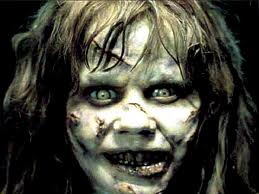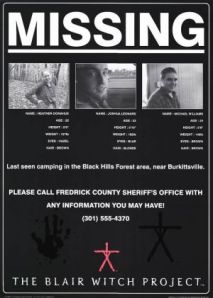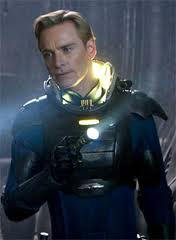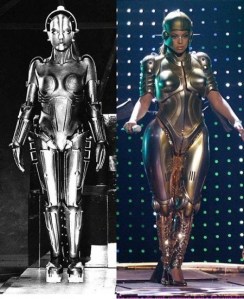Horror is a genre of film that has been around since before 1900 and has terrified and fascinated audiences through storytelling about monsters and playing on nightmares and social fears at the time. For example Invasion of the Body Snatchers (1956) had Communism and the Cold War at the heart of its thematic content. The thing about horror is that it has changed like no other genre to keep up with what makes people tick, and what makes people scared socially and economically.
We’ve also seen the splitting of the genre to produce different ways to scare and entertain an audience in horror from monster movies like Frankenstein (1931), to the 1960’s where psychological horror was born Psycho (1960) to ridiculous gore fests such as the Evil Dead (1981). Zombie films such as The Dawn of The Dead (1978) vampires, werewolves, aliens and even comedy horror have all dominated the market at some point. Many things have changed to adapt to modern audiences. But one thing has remained constant, even more than 80 years after Nosferatu (1922) reached audiences, films are still being made to scare audiences and have their fear and gore tolerance threshold tested.
Technology is a big part of the way in which horror movies have changed. For a start, in old horror films the scenes would have to be shot on stage, meaning greater risk to the actors instead of just using computer technology to make the danger and edit the scene afterwards. The latter wouldn’t seem as scary because the actors won’t really be scared. Take for example Faust (1926). Actress Camilla Horn has a number of intense close-ups due to being close to immolation in a scene where she is burnt alive. As fine an actress as she was it’s the fear of real danger that creates the tension and fear in a way that is impossible nowadays due to health and safety standards. Similarly the director of The Exorcist (1973) William Friedkin fired a gun before yelling ‘action!’ to give his actors that extra edge in scenes where they were supposed to be frightened. This industry change and technological advance often leaves us with computer edited scenes from environments that were shot in comfort and therefore do not seem as sincere as the real thing.
In some ways the horror genre has suffered from technology. When films were shot in black and white it took more effort from script-writing to construct a compelling and thrilling horror story. Since the introduction of colour and special effects the scripting seems to have taken the backseat, in favour of audience figures. We can note the start of this trend in horror by Halloween (1978) becoming a massive blockbuster hit, where before, films of its nature were often dismissed as b-movies. This film is quite a basic film about a heartless serial killer hunting down teenagers on Halloween.
Halloween also added an explicit sexual dimension to a genre that already offered copious sexual issues (Shary 2002 p.139).Carpenter’s film introduces a kind of “suburban gothic,” in which “the horror of a gothic bogeyman comes to haunt the remarkably familiar streets of the American youth” (Phillips 2005 p.141).
Although Halloween does this in a very tense way, marketing executives saw this as a great opportunity. Seeing the teenager’s sexual promiscuity and the heavy gore was an ideal way to make money from young people who paid to see these movies. It was a case of dollar signs in the eyes to produce imitation slasher movies and by the 80’s this formula had become an archetype of the horror genre.
Indeed, the copious sex and violence offered up by the slasher film results in an organised system of film production that is based on sameness rather than innovation, and produces entertainment rather than art. For these reasons it has been strongly argued by critics that the American teen horror film is fit only for teenagers who have not developed the critical faculties to appreciate more refined forms of entertainment (Cherry 2009 p.33).
These films were heavy on blood effects and low on artistic merit showing a shift in the interests of the average horror viewer from films based on literary greats such as Edgar Allan Poe and Mary Shelley to films about psychotic families slashing up intruders in a low brow manner such as The Hills Have Eyes (1977). This is something the audience still yearns for with The Hills Have Eyes being remade in 2006. Even The Evil Dead (1982) was remade and released last week. This section of easily consumable horror for the masses isn’t usually artistic and usually has no merit in scripting but is there to give a scare and show some guts. However, as referred to earlier technology has changed so even the remakes of these films effects look different. With crews dedicated to costume and special effects such as The Evil Dead (1982) and The Thing (1982) where the preparation and acting had to be done with the effect after hours of preparation rather than just edited in afterwards, these films seem much more horrifying than some of the sterility that has come with computer enhancement and CGI effects of the last 15 years.
Another way in which technology has changed horror films is the modernisation of the cellular phone and the internet. Nearly every horror film since Scream (1996) has had to write into the script an explanation for people not merely using their phone to call for help. This may seem like a tiny change to the industry but it has seen many write-ins of spirits controlling technology, erratic computer functioning and supernatural spirits coming to life through technology. This in itself has helped boost the supernatural/demon sub-genre of horror of the past ten years. It also combines with the modern idea of life being over dependant on technology to create fear within an audience who relate to this.
The Ring (2002) is a film which characters contract a curse by modern media which kills them in seven days unless they pass the curse onto someone else by using media. Since this Japanese remake there have been countless films using technology as a theme for fear, usually in a supernatural way. A huge example of this is Paranormal Activity (2007) where technology is the tool of the demon inhabiting the house. This is a new type of psychological thriller which has become very commonplace in popular horror in the last few years. Paranormal Activity was shot; borrowing heavily from The Blair Witch Project (1999) and it shows the influence of technology on the horror genre. Both franchises are recognisable as they are both seen by the audience through what the characters themselves record. In Blair Witch Project it was handheld cameras used as a POV shot of what the characters were seeing. In Paranormal Activity it was the same as well as through home security cameras. Both of these franchises have been very successful and that is largely down to this unconventional way of storytelling/scene shooting. This would have not been possible in the past as the technology wasn’t there for people to own their own cameras, let alone ones light enough to be able to run around in the woods with. This also plays on the audience’s fear of technology and helps them to relate by the characters through owning the same technologies as them. The film itself becomes very personal for the viewer and there are now so many films using these techniques that it is debatably a sub-genre of horror in itself.
The Blair Witch Project also showed a paradigm shift in the marketing of movies in general, but horror in this instance. Through viral marketing and campaigns the hype of the film was bigger than the film itself, all to get the audience to believe the ‘footage’ was real. This added to the hysteria and intrigue surrounding the film. In fact the film itself initially cost $35,000 to produce but when Artisan studios bought the rights for $1.1million, a whopping $25million was spent on marketing it into this true story idea.
This shows the first time when the internet was used massively to promote a film and generate hype and also gives insight into modern movie marketing. Many horror films these days have continued the trend of using the ‘true story’ label and it has been a modern hallmark of the horror/thriller genre ever since. Though it was The Exorcist that was the original ‘true story’
The role of females has also been a big change in contemporary horror. This is down to societal attitudes changing but also because many more women than before have their own disposable income and enjoy being scared/intrigued in the cinema just as much as their male counterparts. We are less likely to find the damsel in distress portrayed in The Cabinet of Dr. Caligari (1920) or King Kong (1933) and are more likely to find a woman more capable of defending herself and being the protagonist. With Alien (1977) this was a refreshing change to have a female protagonist who wasn’t just in the movie to run around screaming and then be killed off (or in the case of Jaws (1975) swim around a bit first). But in Alien Sigourney Weaver’s portrayal of Ellen Ripley paved the way for the female audience
everywhere to immerse themselves in the role of the protagonist who could defeat evil instead of merely being saved by some man. It has gotten to the stage where The Thing prequel has a female protagonist in place of a male protagonist like in the original. The Evil Dead remake has a main character that is female (and for anyone familiar with the franchise it is her that picks up the chainsaw!). So it is the development of horror to see women as a very important audience to cater for in modern day cinema and this changed from when it was young males who needed to be gratified most. In The book “Men, Women and Chainsaws” Carol J Clover supports this “The functions of monster and hero are far more frequently represented by males and the function of the victim far more garishly by females. The fact that female monsters and female heroes, when they do appear are masculine in dress and behaviour and often in name and that male victims are shown in feminine postures at the moment of their extremity…” (Clover,1992,p 12.)
This quote showed that within the horror genre there were defined roles for men and women and while in some instances this is still the case there have been many post-modern throwbacks and in the cinema of today it isn’t credible to have this dumb blonde character type as the leading female. It is believed now that women in horror films will have better survival reactions and mental strength to fight off evil rather than simply make a lot of noise until someone saves them or they meet their demise. The last character like this that was in a successful movie (though a suspected parody of the horror genre up to this point) was in Scream (1996).
So in summary, technology has changed the ways in which horror films are made, distributed and marketed. Societal trends have changed so that gender roles have blurred and films are more accessible to a wider range of people than in the past. Horror is also one of the most changing genres due to trends and fear evolving and changing over time.
One point to make also is that horror has largely and regularly used pastiche to come up with new films, rather than make original ideas like the pioneers of the genre did. There are almost countless re-imagining’s of classic 70’s and 80’s movies. Many of these are nothing like the lauded originals. But this is what audiences want as most prove to be very popular at the box office. Also many new films like Insidious (2011) and Mama (2013) rely on loud noises and jumps rather than suspense and intrigue to scare modern audiences. This is a trend many film critics have berated as unimaginative, but is it any different from those that declared slasher movies as crude and unimaginative compared to the post-modern and silent era horror films before them? The horror genre is always changing to keep up with young trends and to keep finding new ways (sometimes basic) to keep us entertained on the edge of our seats. It is a genre that still survives and moves onto something new each time it seems like countless copycat films have spoilt it.
Word count: 2106
References:
CHERRY, B., 2009. Horror (Routledge Film Guidebooks). 1st edition. Routledge.
CLOVER,C,1992. Men, Women and Chainsaws. P12 Princeton University Press
PHILLIPS, K.R., 2005. Projected Fears: Horror Films and American Culture. 1st edition. Praeger.
SHARY, T., 2002. Generation Multiplex: The Image of Youth in Contemporary American Cinema. 1st edition. University of Texas Press.







